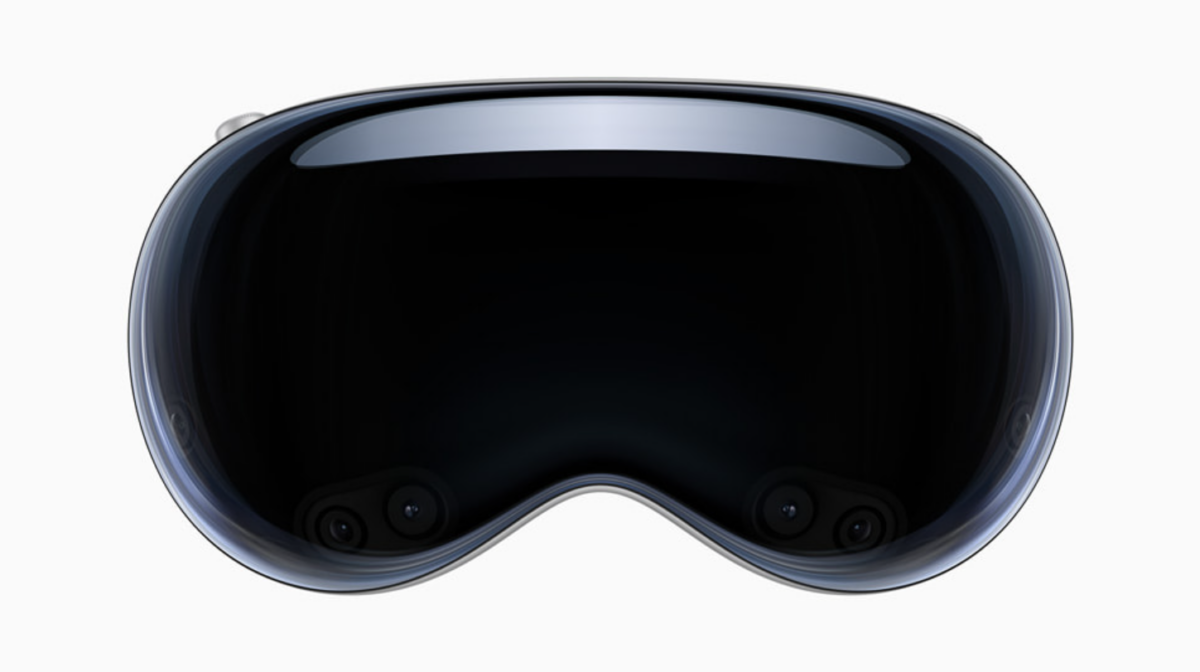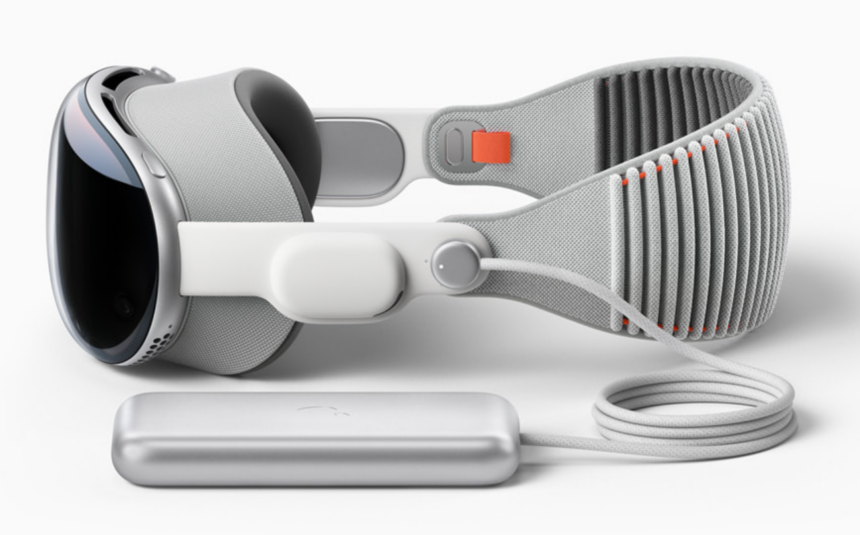Apple Vision Pro - price, release date, all you need to know

08.06.2023
- The default frame rate is 90 Hz, but a 96 Hz mode is automatically used for 24 FPS movies.
06.06.2023
- Added some text updates and links to other articles regarding the Vision Pro
Apple just announced the Vision Pro VR/AR headset. Read all about Apple's first "spatial computer" in this article.
At today's keynote for WWDC 2023, Apple's in-house developer show, the tech giant announced its long rumored AR/VR headset called Apple Vision Pro. Notably, Apple is not using the usual terms like Virtual, Augmented and Mixed Reality: instead, they are talking about Spatial Computing or a Spatial Computer.
Content
Vision Pro - This is Apple's XR headset
Apple's presentation was a bit light on hardware specs, but many of the leaks from earlier this year turned out to be pretty accurate.
The Vision Pro features two micro-OLED displays with a resolution of more than 4K per eye, bringing 23 million pixels to the screen (about 3.3 times as many as the Quest 2) and are said to provide excellent image sharpness in combination with special catadioptric lenses. HDR is also supported, but we don't know yet what the field of view will be. The default frame rate is 90 Hz, but a 96 Hz mode is automatically used for 24 FPS movies.
A so-called "reverse-passthrough" display on the front of the headset reproduces the user's eyes. In the presentation, this looked similar to wearing tinted diving goggles. The idea is to make social interactions at home or at work look more natural.
Apple's M2 processor handles the main computing load of the standalone headset. A second, custom-designed chip, called R1, provides "near-instantaneous" real-time viewing of the real world. The Vision Pro is powered by the new VisionOS operating system, which is designed for spatial applications, including direct support for Unity and ARKit.
Passthrough, hand and eye tracking
Two color passthrough cameras provide see-through to the real-world environment. Eight additional cameras, including infrared and two pointing straight down, provide precise hand tracking, eliminating the need for VR controllers. A LiDAR sensor and two depth sensors provide real-time 3D mapping of the environment.
Apple Vision Pro also works as a 3D camera. Capture 3D images and video at the touch of a button. Read more in the linked article.
Spatial Facetime calls are also planned, using the sensors in the XR glasses. Read more in the linked article.
Eye tracking inside the XR headset is based on four high-speed cameras and multiple infrared LEDs. This enables foveated rendering, which means that only the image in the focus of the eyes is rendered in full detail. The Vision Pro is activated by an iris scan, and the interpupillary distance can be adjusted mechanically.
Battery, operation, spatial sound
The battery connects to the headset via a cable and can be worn on the hip or in a pocket. It lasts for about two hours. There was no mention of whether the battery is hot-swappable.
The headset is controlled by a mixture of hand and eye tracking, as well as voice control. At least in the presentation, it looked very intuitive and precise. There will be no VR controllers, as mentioned before.
The sound comes from spatial audio speakers built into the headband. They are supposed to include the environment via audio ray tracing.
Design and comfort, modularity
Apple's VR/AR headset looks like slim ski goggles. The headband serves as a mount, with a wide, stretchy strap that is designed to comfortably support the back of your head. Unlike any other VR/AR headset on the market, this one can probably be worn comfortably while lying down.

Apple Vision Pro with battery and headband. | Image: Apple
The headband may not be ideal for fitness and sports, but Apple did not show any sports-related features.
The face mask is also made of fabric and was designed based on thousands of facial studies, according to Apple, so it adapts to individual face shapes. The face mask comes in a variety of sizes and shapes.
Interestingly, the face pad and headband are modular and interchangeable. Regular glasses won't fit under the Apple Vision Pro. Instead, prescription lenses from Zeiss can be magnetically attached.
Target group, games & entertainment
Apple Vision Pro is not aimed at professionals, as some people expected. Apple's XR headset will be marketed directly as a daily companion for use at home and on the go, as well as a work device.
No VR games have been announced.
Apple is even teaming up with Disney for some truly immersive entertainment.
Apple Vision Pro: Release and price
Unlike the Quest 3, the Vision Pro is not yet a mass market product, and the price tag is a reflection of that. The groundbreaking technology that is built into the device has a hefty price tag of $3,499. We don't know the Vision Pro's exact release date, but it's coming early 2024.
Note: Links to online stores in articles can be so-called affiliate links. If you buy through this link, MIXED receives a commission from the provider. For you the price does not change.